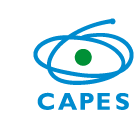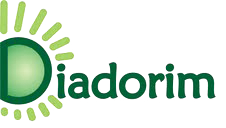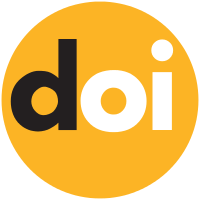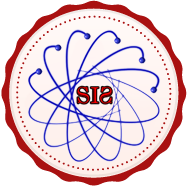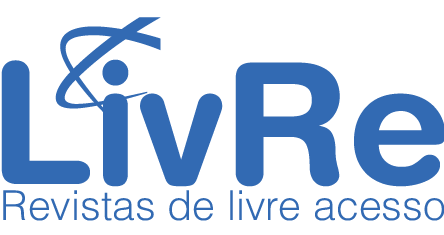Do ensino presencial ao Ensino A Distância no contexto universitário na Península Ibérica
DOI:
https://doi.org/10.17143/rbaad.v8i0.218Keywords:
Educação à distância. Online. Comunicação. Métodos de Ensino. Computadores. Tecnologias de Informação e Comunicação. tutoriaAbstract
Este artigo faz uma abordagem da aprendizagem à distância como possibilidade de estabelecimento de interacções à distância entre estudantes dispersos geograficamente mas com interesses comuns. O acesso a meios de construção de conhecimento tecnologicamente estruturados e a sua relação com o ensino é outra das abordagens efectuadas. A selecção da temática é motivada pela experiência enquanto professora no ensino à distância universitário. As principais teorias da educação à distância trouxeram para a pedagogia uma nova percepção da dimensão de espaço e tempo de aprendizagem. No ensino convencional a sincronização requerida como condição essencial para a realização dos processos é redimensionada quando o mesmo é desenvolvido em ambientes não presenciais, sobretudo após a introdução da internet como meio pedagógico.Downloads
References
Bates, A. (2005). Technology, E-Learning and Distance Education. Edition, London: Routledge.
Blankson, J.; Kyei-Blankson, L.; (2008). Nontraditional student’s perception of a blended course: integrating synchronous online discussion and face-to-face onstrutions. Journal of Interactive Learning Research. Vol.19, No.3, pp.421-438.
Bottentuit, J.; Coutinho, C.; Alexandre, D. M-learning e webquests (2006). As novas tecnologias como recurso pedagógico. Proceedings of 8th International Symposium on Computers in Education (SIIE2006). Vol. 2, p. 346-353. León: Servicio de Imprenta de la Universidad de Léon.
Brennan, S. E. & Lockridge, C. B. (2006). Computer-mediated communication: A cognitive science approach, in K. Brown (Ed.), ELL2, Encyclopedia of Language and Linguistics, 2nd Edition. Oxford, UK: Elsevier Ltd.
Brennan, S. E. & Lockridge, C. B (2006). Computer-mediated communication: A cognitive science approach, in K. Brown (Ed.). ELL2, Encyclopedia of Language and Linguistics, 2nd Edition. Oxford, UK: Elsevier Ltd.
Cornford, J., Pollock, N (2003). Putting the University Online. Buckingham: Society for Research into Higher Education/Open University.
Dougiamas, M.; Taylor, P (2003). Moodle: Using Learning Communities to Crate na Open Source Course Management System. Proceedings of the EDMEDIA 2003 Conference, Honolulu, Hawai.
Duggleby, J (2000). Como ser Tutor Online. Monitor, Lisboa.
Figueiredo, D (2002). Redes e Educação: a surpreendente riqueza de um conceito: In Conselho Nacional de Educação, Redes de aprendizagem, Redes de Conhecimento. M. E: Conselho Nacional de Educação.
Grenhow, C (2007). What Teacher Education Needs to Know about Web 2.0: Preparing New Teachers in the 21st Century. In R. Craslen et al (Eds.). Proceedings of the 18 th International Conference of the Society for Information Technology & Teacher Education, SITE 2007, p. 2027-2034. Chesapeake, VA: AACE.
Hill, G. & Tedford, D (2002). The Education of Engineers: The uneasy relationship between engineering, science and technology. Global Journal of Engineering Education, UICEE.
Paulsen, M (2002). E-Learning: o papel dos sistemas de gestão da aprendizagem na Europa. Colecção formação a distância & e-Learning, Inofor, p. 21.
Pereira, A (2005). Pedagogical Issues in ODL. In Getting tarted in ODL. Antwerpen: Garant Publishers.
Pinheiro, A (2005). A Aprendizagem em Rede em Portugal. Editor: Universidade do Minho.
Pretto, L (1999). A ICT in Education: Challenges for the Curriculum. www.ufba.br/~pretto.
Pretto, N.; Lima Jr. (1999) A ICT in Education: Challenges for the Curriculum. www.ufba.br/~pretto.
Reis, F. L.; Martins, A . E. (2008) Perspectives of the education the distance in Portugal. Proceedings of the International Council on Education for Teaching, Universidade do Minho, 14-17 de Julho.
Reis, Felipa Lopes; Martins, António Eduardo (2008).The Contribution of the Professor in the distance Education in the University. Proceedings of the Workshop ICIS, Paris, 14 de Dezembro.
Souza (2005). Uma Proposta Construtiva para a Utilização de Tecnologias na Educação. In R. Silva & A . Silva (Org.), Educação, Aprendizagem e Tecnologia – Um Paradigma para Professores do Século XXI. Lisboa: Edições Silabo.
Salmon (2000). G. E-moderating – the key to teaching and learning online. Kogan Page, London.
Santos, A (2007). As TIC e o Desenvolvimento de Competências para Aprender a Aprender: um estudo de caso de avaliação do impacte das TIC na adopção de métodos de trabalho efectivos no 1º Ciclo EB. Dissertação de Mestrado. Aveiro: Universidade de Aveiro.
Schrader, P.; Lawless, K.; Mayall, H. (2008). The Model of Domain Learning as a Framework for understanding internet navigation. Journal of Educational Multimedia
and Hypermedia. Vol 17, No 2, pp.235-258.
Verkroost, M.; Listsen, H.; Meijerink, L (2008). Finding a Balance in Dimensions on Blended Learning. International Journal on E-learning. Vol 7, No.2, pp.499-522.
White, B (2007). Is Web 2.0 the Future of the Web? Comunicação oral apresentada no ED-Media 2007. Vancouver, CA: AACE.
Downloads
Published
How to Cite
Issue
Section
License
All subsequent publications, complete or partial, shall be made with RBAAD's acknowledgment in the quotations as the original publisher of the article.
RBAAD offers Creative Commons license (CC BY 4.0) to all the published works.


